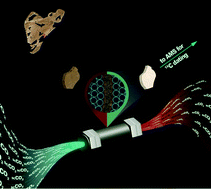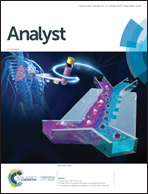Assessing the efficiency of supercritical fluid extraction for the decontamination of archaeological bones prior to radiocarbon dating†
Abstract
Bone is one of the main sample types used for building chronologies in archaeology. It is also used in other research areas such as palaeodiet and palaeoenvironmental studies. However, for results to be accurate, samples must be free of exogenous carbon. Contamination can originate from a wide range of sources in the post-depositional environment but may also occur during excavation and post excavation activities (i.e. with the application of conservation materials) or during laboratory handling. Efficient procedures to remove contamination are therefore crucial prior to radiocarbon or stable isotope measurements. This work describes the development of an innovative sample pretreatment for bones, based on using supercritical CO2, which shows unique solvation properties. The effectiveness of supercritical fluid extraction (SFE) to remove conservation materials was compared with that obtained when applying a routine extraction based on the use of organic solvents (methanol, acetone and chloroform). The chemical composition of the bone samples before and after the two pre-treatments was then investigated using analytical pyrolysis-based techniques: EGA-MS (Evolved Gas Analysis-Mass Spectrometry) and Py-GC/MS (Pyrolysis-Gas Chromatography coupled with Mass Spectrometry). Collagen samples extracted from the same bones, prepared with the two cleaning protocols, were also radiocarbon dated by Accelerator Mass Spectrometry (AMS). The results of this study show that SFE is an efficient alternative method because it was as effective as the established treatment protocol. It removes contaminants such as conservation materials from bone samples with a minimum of handling and can be used routinely in radiocarbon dating laboratories. This work also demonstrates that analytical pyrolysis is not only a very efficient method to identify contaminants in bones but also to assess the effectiveness of the pretreatment prior to the radiocarbon measurement of the samples.



 Please wait while we load your content...
Please wait while we load your content...